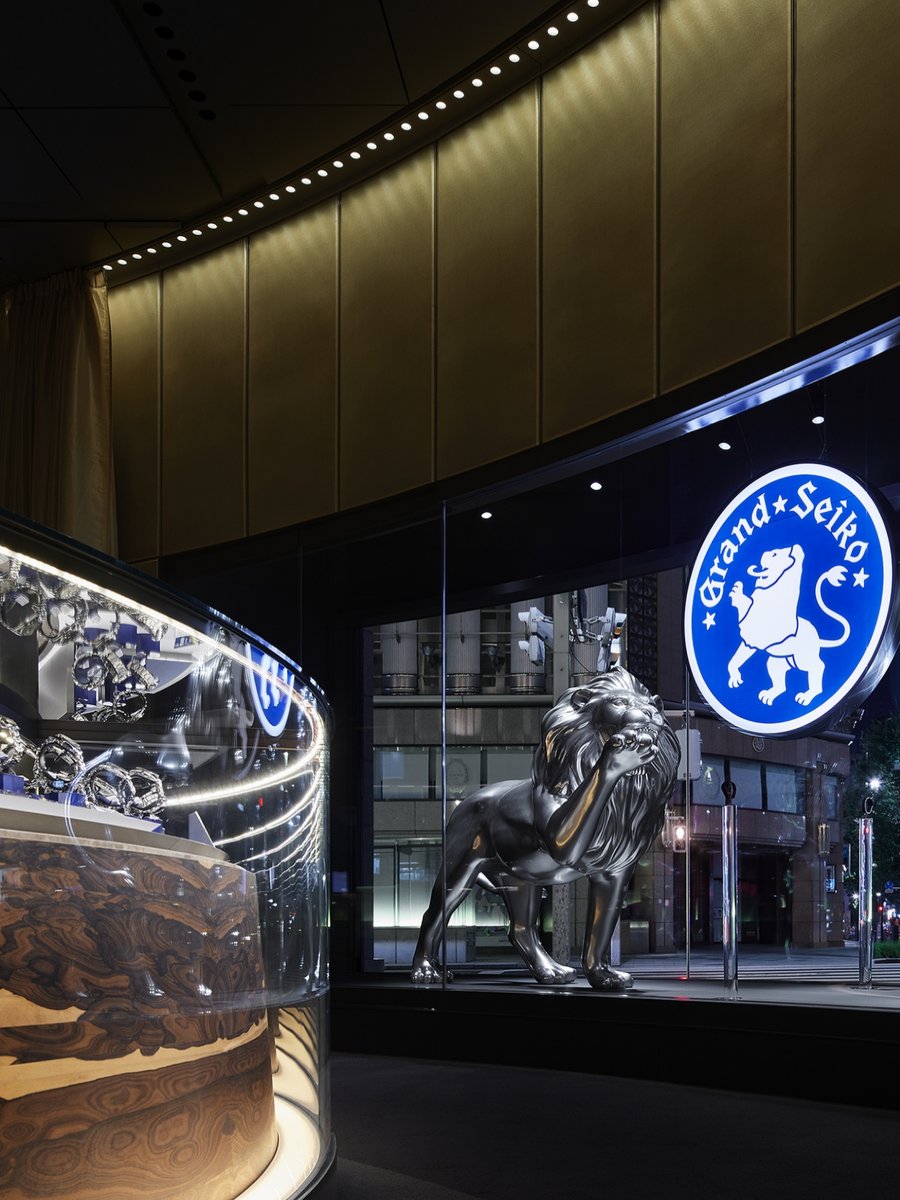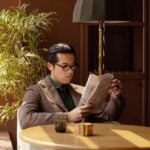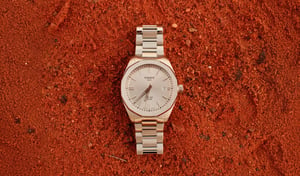Earlier this April, the stylish folks at Grand Seiko Australia saw fit (for reasons unknown) to invite yours truly on a four-day excursion to Japan: where the brand’s parent company – the leviathan Seiko Corporation – hosted a handful of journalists, with most of the contingent hailing from the Aussie men’s publishing scene.
We were, of course, primarily in-country to learn more about Grand Seiko’s state-of-the-art watchmaking studios in Shiojiri and Morioka – located in central and northern Japan respectively.
However, as luck would have it, 24 hours of the itinerary unfolded across downtown Tokyo; and amid excursions to the Seiko Museum, Hibiki Dynamic Kitchen and a handful of other emblematic locations in the Japanese capital, I’ve still found myself reminiscing (weeks later) about our brief visit to Wako Ginza – the shopping destination of every watch idiot savant’s dreams.
RELATED: Collector’s Corner – Justin Hast, Watch Culture’s Brilliant Millennial Multi-Hyphenate

Both a geographical landmark and landmark retailer, the original structure now housing Wako was built in 1923. Inclusive of travel retail and another department store in Osaka, Wako wouldn’t officially spin off from the wider Seiko umbrella until 1947. However, this building – with which the company is now synonymous – carries special significance not just to Seiko, but to citizens all over Japan.
Its prominent analog clocktower and granite façade (decorated in the Neoclassical style) were some of the few structures to survive Allied bombing of Tokyo during WWII. In the post-war era that followed, the ‘Hattori Clocktower’ – as it’s informally known – became a symbol of resilience; so much so that it remains the unofficial nexus of Ginza even today – delighting passersby with hourly airplay of the famous Westminster chime.
What is Wako Ginza?

A brief history lesson is all well and good, but in focusing too much on the external aspects of Wako Ginza, you might miss the fact that this is one of the premier shopping destinations in Japan (and by extension, the world). The store’s five lowermost levels follow a floorplan that resembles other eminent Japanese department stores such as Isetan and Ginza Six: with each level dedicated to menswear; women’s fashions; home goods; gifts; and so on.
In the basement, there’s even a ‘Gourmet Salon’ where visitors are able to purchase seasonal produce and confections from all over Japan – and grab a meal while they’re at it.


For horologists, the centrepiece of all this activity is spread across 1/F and 2/F. Starting from the ground up: at entrance level, you’ll be greeted not just by the fine mechanical timepieces of Grand Seiko (many of which are exclusive to Wako’s Ginza location) but also, a variety of third party brands including Breguet, Piaget, and IWC.
In most cases, Wako has been importing these Swiss watchmakers for decades; and the unifying focus on brands with esteemed heritage and a track record in complications paints an interesting picture of what Japanese collectors look for when purchasing new timepieces.

Ascending to 2/F – either by elevator or staircase – you’ll be greeted by Grand Seiko Ginza’s flagship: an immense in-store boutique that distinguishes itself from other points of sale across Tokyo through the inclusion of historical showcases from the brand’s past (e.g. period-correct examples of the 1960 Grand Seiko ‘First’) and a bespoke counter.
The relaxed, semi-enclosed space (which Wako staff have likened to visiting a friend’s living room) is flanked at opposite angles by the Credor Salon and ‘jewellery square’.
Offering an alternative to those who don’t necessarily dig the whole ‘mechanical vs. Spring Drive’ dichotomy that is Grand Seiko’s specialty; the watches of Credor are, generally speaking, imbued with a much more artistic worldview: meaning it’s not unusual for the collection – especially in the Japanese home market – to hone in on artistic crafts like enameling, gem-setting, or usage of ultra-thin movements.
Delightful Distractions: Tea, Cake, And Gifts Aplenty

As we intimated earlier, Wako Ginza’s chief allure is the opportunity to purchase some of the finest examples of domestically manufactured watches in Japan. But, in the event that you don’t feel like splurging on certifiably insane special editions (like this SLGH015 – now selling on the grey market for +$20,000) the store still offers plenty in the way of comparatively affordable, high-quality gifts that will remind you of your travels in Japan.
Pressed for time, I only managed to survey a handful of the concessions you’ll find throughout 1/F-4/F; though a clear favourite was the one specialising in homewares – again, located at basement level. Themselves no strangers to handmade, culturally steeped craft; this is where the Wako team have curated various traditional Japanese and European interior goods.
As you’d expect, it’s a very thoughtful selection; and despite stiff competition for my attention from some Dr. Vranjes diffusers, I ended up snagging a crystal tumbler decorated in the edo kiriko (‘Edo cut glass’) style.
Inside Atelier Ginza – Wako’s Secretive In-House Watch Studio


With the kind of understatement that is typical of Grand Seiko, our handlers concluded the tour of Wako Ginza with an impromptu excursion up to the building’s seventh floor. For decades, the upper reaches of the Hattori Clocktower building served as Seiko Group’s corporate offices; and while this continues to be the case in some limited capacity, Shinji Hattori (the company’s illustrious, 4th generation CEO) has made little secret of the fact that he wants these once-clandestine areas to serve “as a base [for] more direction communication” with clients.
Consequently, a small handful of Western media and international Grand Seiko collectors are now being invited into ‘Atelier Ginza’: a new watchmaking studio (located on 7/F) that brings together – to put it bluntly – the brightest stars in the entire Seiko galaxy. A quick rollcall lists names like Takuma Kawauchiya, the innovative young designer whose work on the experimental ‘T0’ movement eventually gave us the ‘Kodo’; and Satoshi Hiraga – a watchmaker whose exploits are so widely revered that he’s been twice recognised for “diligence and perseverance” by the Japanese government.
RELATED: The Kodo SLGT003 Is The Most Complicated Grand Seiko Ever Made
The decision to relocate such world-class watchmakers in the heart of Ginza speaks to a layered strategy for future growth: enabling talented designers and engineers to bounce ideas off one another in real time; while enabling the watch community to draw a real, human connection to the superlative craftsmanship present in every Grand Seiko, Credor and Seiko wristwatch.
For Atelier Ginza, the hour is yet early – the studio only officially commenced work earlier this February – but again, the mere fact of its existence adds to the allure of Wako Ginza – and reinforces, in no uncertain terms, why high-end Japanese retail is something that every well-heeled traveller simply must experience at least once.
















